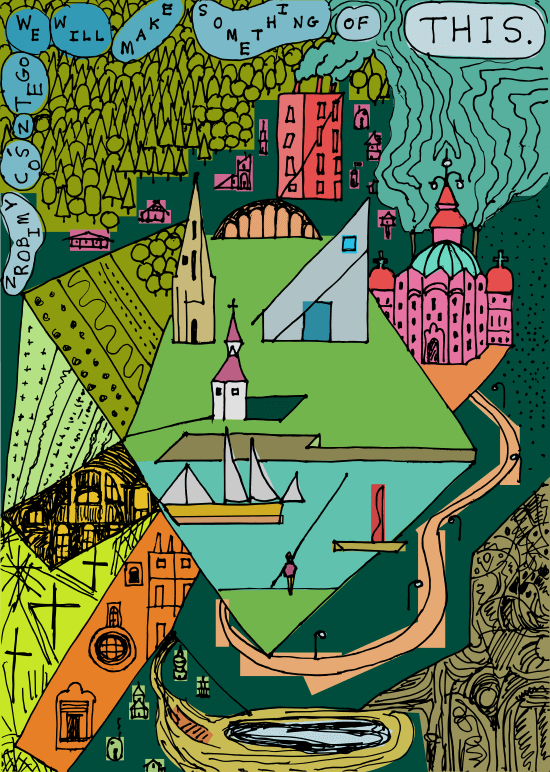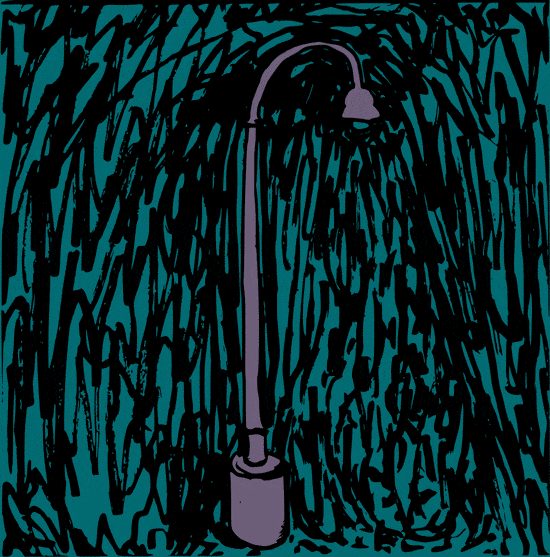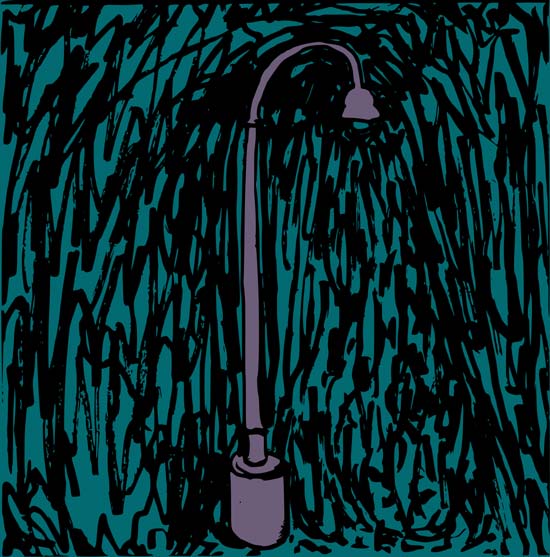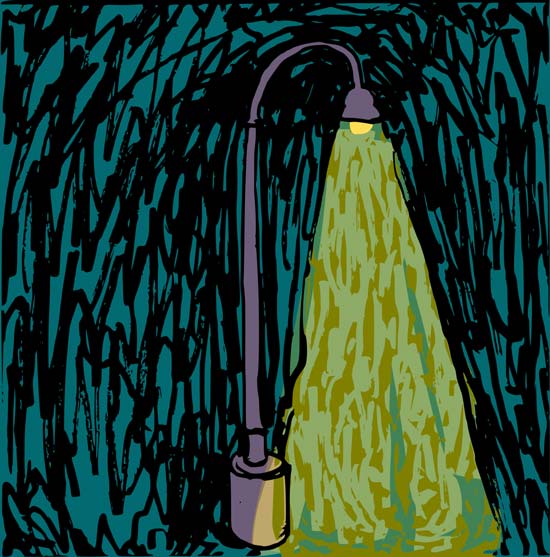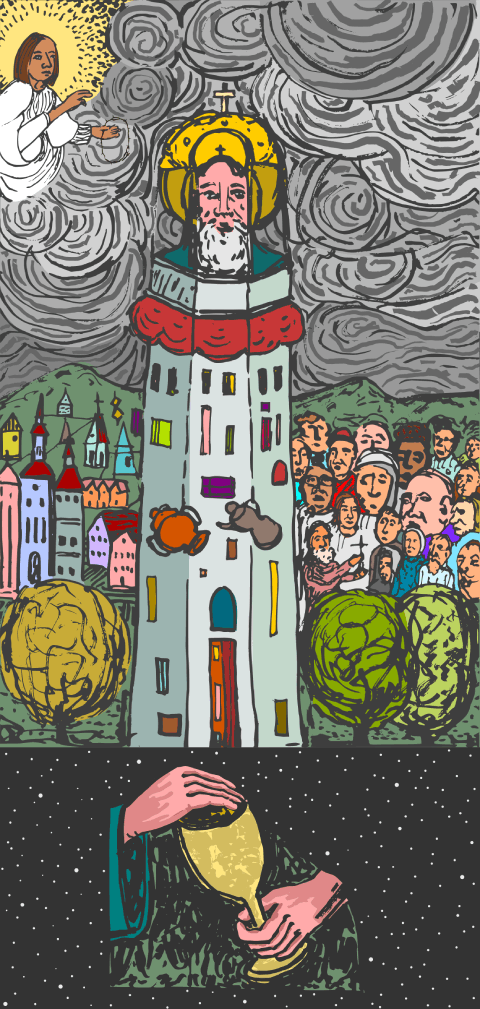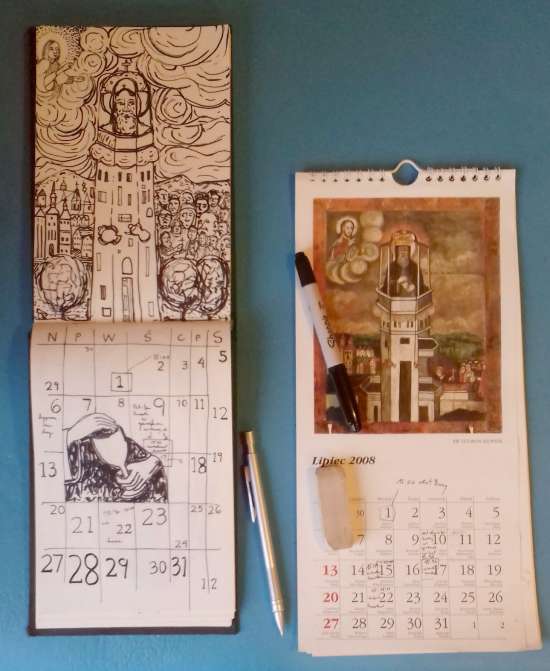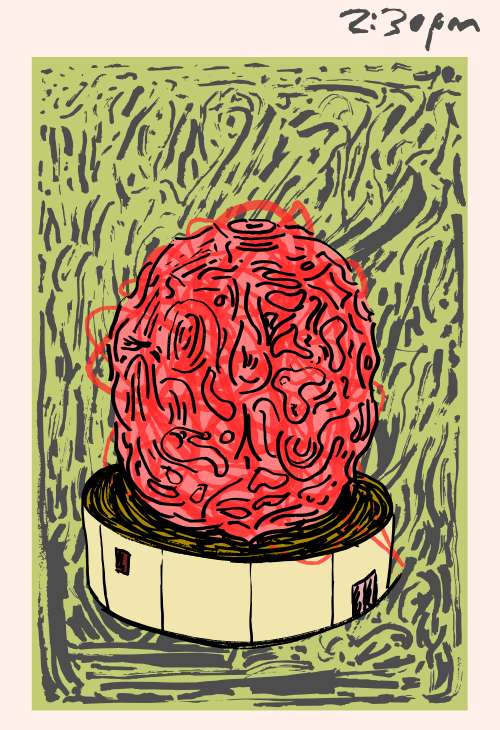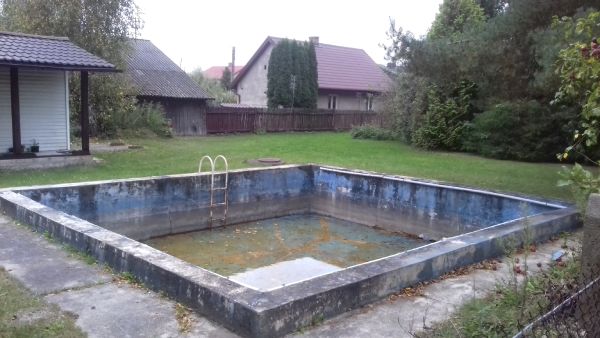The image featured here was built from a collection of inspirations. While chance is a part of almost every decision, when an artist starts to add more than one subject within a drawing or painting chance becomes a unifying force. In other words, I can say where one part of the image comes from. However, as a whole it is much hard to estimate a complete meaning. While words can not complete the picture, we can have a sense or have a visual understanding about the sum of the parts. This is facilitated by the pattern of decisions that the artist infuses into his or her work.

The pattern of artmaking is often discussed among other artists as a strategy. Because there are many potential choices involved in creating art, limiting certain options creates a focus. Even the most chaotic art has a strategy. Lacking other structure or stated meaning, there is always a place where the artist started and then stopped working. This picture employs a color strategy. While not totally blue, there is an attempt at a dominate blue image with a focus on cool colors. The effect gives the picture a sense of the evening. For me the graphic drawing and the color choices feel like two different animals or like trying to work with both left and right hands. One hand is always a bit more adept then the other, and at times we have to struggle with the hand we are less use to using.
While using hands as a metaphor for balancing abilities, they are also a central element in the picture. It is not apparent that the central figure can see all the elements around him. However, he is reaching and trying to feel his way in a world with many moving elements. In a broad sense, this is also what art allows us. That is, to feel with all our limitations, and reach for a higher order.
Notes: While the subject of color is vast. I was introduced to it in a formal way by Richard Cramer. Later I came across a wonderful book Color in Contemporary Painting (Watson-Guptill Publications, 1991) by Charles LeClair.
